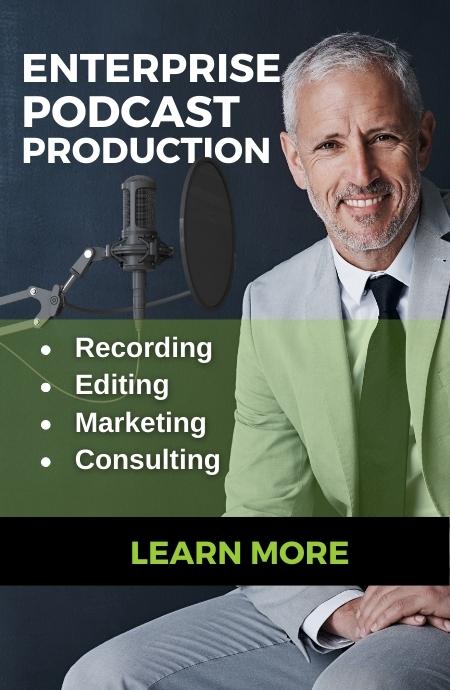If you want your video and podcast content to perform, you have to think beyond what you want to say and focus on how you say it. Many creators and marketers obsess over the message and miss the crucial detail: content structure.
At Content Monsta, our behind the scenes conversations reveal just how much of a difference a strong structure makes – from attention spans to branding and even how you introduce your guests.
Here’s what we’re learning as we fine-tune our own video and podcast formats, and how you can rework your content structure for better engagement and stronger business outcomes.
The Shift: From Radio Roots to Modern Content Structure
Podcasting and video creation often mimic traditional radio with lengthy intros, overlong host monologues, and unnecessary detail. But as A. Lee Judge points out, audiences are no longer tuning in by accident, they’re making active choices in a saturated attention economy.
That’s why the first thirty seconds of your content are critical. Rather than a long brand story or guest bio, you need a fast hook: a “hot take” that delivers value immediately and provokes intrigue.
Gone are the days of drawn-out, radio-style intros. Today, the optimal content structure for videos and podcasts features:
- An immediate, value-driven hot take
- A lightning-fast branded intro (just 3–4 seconds)
- Rapid transition straight into the core conversation – zero fluff
- Guest introductions woven seamlessly into questions
- Dynamic promo or ad placements that feel like part of the show
You can’t afford to waste your viewers’ or listeners’ attention on unnecessary preamble. If you do, analytics will show the drop-off within those crucial early moments.
Mapping Your Content Structure for Consistent Results
Content Monsta’s process starts by visually diagramming the assets needed for each type of content. Every piece, from YouTube videos to LinkedIn and Instagram shorts, is mapped out before production begins. This gives internal teams and clients clarity on exactly what needs creating, from hot takes to end screens and branded splashes.
- Lee Judge explains, “When you create content, have a plan as to the structure… what you present first, second, and third, and last, and what you present within that content to keep the pace up and keep attention.”
This step might seem internal, but it’s the backbone of building a recognizable, scalable brand identity across every channel.
The Anatomy of Modern Video and Podcast Content
So, what does an optimal content structure look like? Here’s how we’ve adjusted our own for maximum retention:

1. Hot Take First
Start with a punchy insight or soundbite directly from the episode. It should deliver enough value to hook the viewer right away.
2. Branding, Fast and Focused
Follow with a three to four-second clip that flashes the brand and show identity. No extended vignette, just enough to create recognition.
3. Dive Straight Into Real Content
Skip long-winded descriptions of what the show is or deep guest credentials. If a guest’s background is important, weave it into your opening question. Let your audience discover who they are through the value they deliver, not a biography.
4. Ads and Promos, Seamlessly Integrated
Promotional messages should not interrupt the flow or feel like a break. As Marc, our podcast producer, advises, don’t signal that a break is happening. Instead, integrate promos as part of the ongoing value, with zero “we’ll be right back” language. Make them short, relevant, and always place them where they feel organic in the discussion.
5. Consistent, Branded End Screens
End with visuals that direct viewers to your next video, subscribe options, or a relevant playlist. Consistency in these cues helps build your audience’s expectations over time.
Shorts, Thumbnails, and Platform Differences Matter
Content structure is not one-size-fits-all. A short video for YouTube or LinkedIn requires its own unique approach: Use the hot take for an extra-short video and prioritize looping designs that encourage repeat views. For longer shorts (up to three minutes), a longer hot take can help if it adds value.

Pay attention to platform behaviors:
- Does the video autoplay?
- Is the first frame or thumbnail what viewers see first?
- Do platform time limits eat into your available window for engagement?
Every second counts, particularly in short-form content. Your branding or splash screen should be fast, unobtrusive, and placed at the end for best effect.
Content Structure for Marketers: Practical Takeaways
The fundamental lesson from our behind-the-scenes work is simple: a strong, intentional content structure beats ad-hoc creation every time.
To apply these insights:
- Plan all video and podcast formats before you start shooting or recording
- Diagram your intro, content, ads, and branding assets for every channel
- Keep audience attention at the core of every structural decision
- Develop a reusable library of branded intros, end screens, and promo spots for agile editing
- Analyze engagement metrics and let performance guide your ongoing adjustments
Today’s attention economy leaves little room for meandering intros or unfocused mid-show chatter. When you start with value, maintain momentum, and close with consistent calls to action, your viewers and listeners will keep coming back.
Rethink your content structure, and you’ll find your brand’s voice grows stronger with every piece you publish. Want to see how the pros do it? Take a look behind the scenes at Content Monsta – where every detail, every second, and every structure is built for modern results.

AI + Human Powered Content Marketing: Speed Without the AI Slop
FAST, CHEAP, and GOOD. You can have them all. Speed keeps coming up in client conversations, and for good reason. The meaning of speed has changed. Fast used to mean

How to Measure Content Marketing ROI
Content marketing ROI is often miscalculated because it is based on a short time frame, a single piece of content, or even a single campaign. Instead, it should be measured

Why Pay for Remote Video Production
If you already have someone on your team who can edit videos, it’s fair to ask, “Why would we pay an outside agency?” In reality, remote video production doesn’t require

